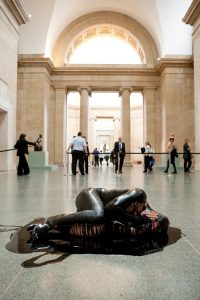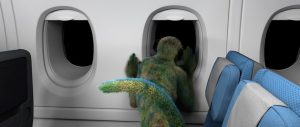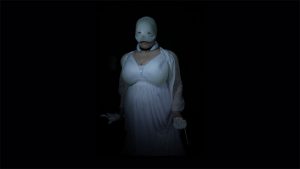The third project i discovered at A School of School, the 4th Istanbul Design Biennial (after Halletmek. The Turkish art of speeding up design processes and Genetically Modified Generation) is not a project but a cabinet of curiosities curated by SulSolSal, a collaboration between Brazilian architect Guido Giglio and South-African designer Hannes Bernard.
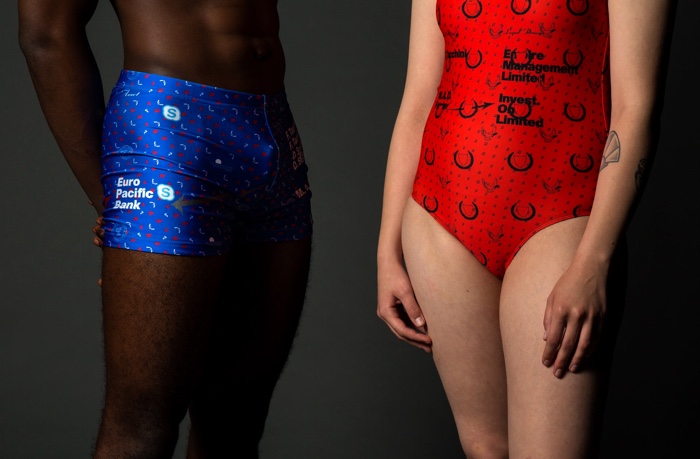
Demystification Committee, The Offshore Spring/Summer 2018, 2018
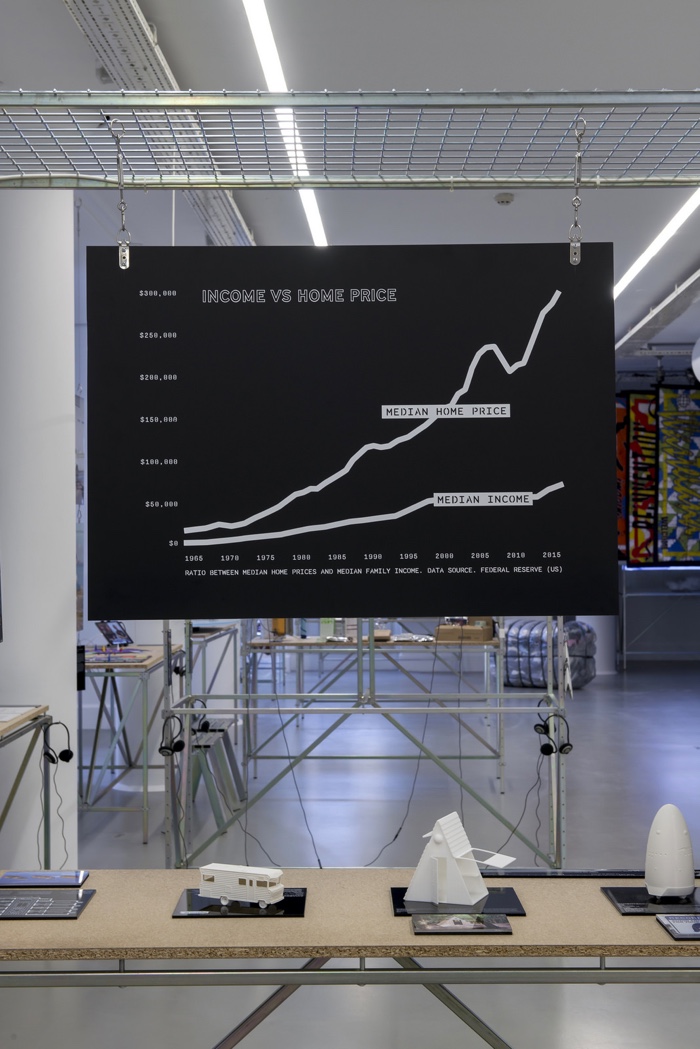
Exhibition view of Staying Alive, part of the 4th Istanbul Design Biennial. Photo: Kayhan Kaygusuz
Global warming, widespread precarity and the threat of another economic crisis, the rise of far right discourses across Europe and the US, the mass extinction of natural species, (cyber)terrorism, political unrest, etc. The world seems to be facing a constant stream of menaces and crisis that only seem to grow with each passing day. Governments don’t seem too concerned about it, they are too busy signing climate agreements they won’t respect and courting votes with short-time measures that can only fool the naive and the self-centered. As for industries, they pursue their strategies of turbo-greed as if there was no tomorrow. And maybe indeed there won’t be any tomorrow.
SulSolSal’s Staying Alive is part a “wunderkammer” and part a survival guide. The artists, designers, architects and other resourceful citizens whose thoughts and works the SulSolSal duo has collected look bravely at some of the crisis we are facing today and attempt to help us prepare for a future of adversity and scarcity.
I wish SulSolSal‘s website was up and running and that they hadn’t titled their contribution Staying Alive because i’ve spent the whole weekend pretending i’m Robin Gibb. Other than that, i can’t fault the work of these guys. The research they did for the Istanbul Design Biennial was smart and inspiring.
Here’s my favourite projects in their selection of interesting and often tongue-in-cheek attempts to respond to the ongoing climate of impending doom:
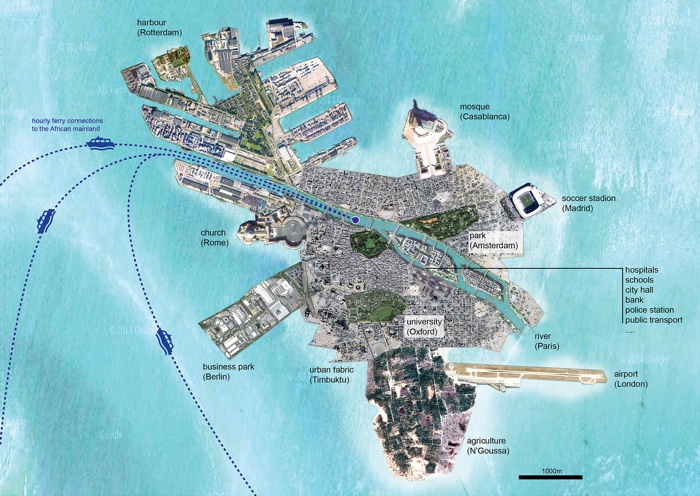
Theo Deutinger, Europe in Africa, 2014
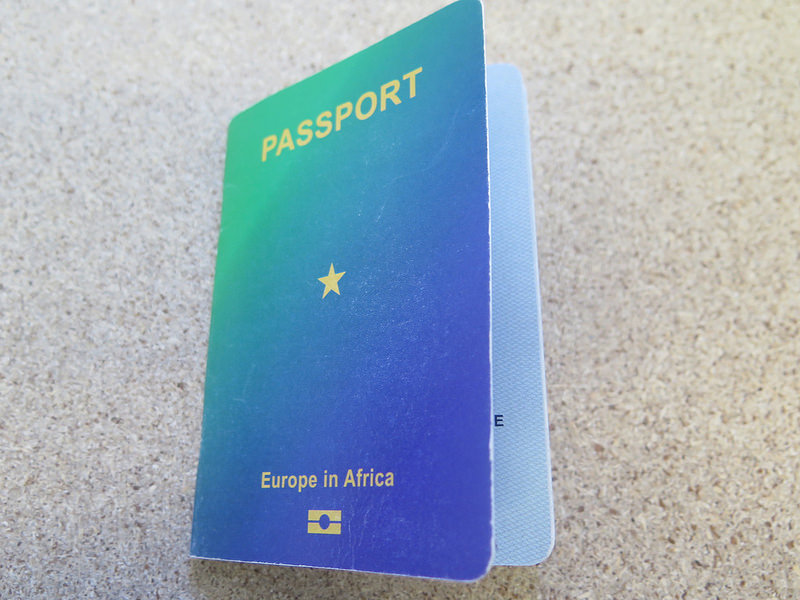
Theo Deutinger, Europe in Africa, 2014
Europe in Africa (EIA) is a proposal for a new city – state on an artificial island to be created right between the Exclusive Economic Zone of Tunisia and Italy. The aim of EIA is to provide a secure place for people that have to flee their country and want to reach Europe.
The purpose-built island would offer a football stadium, a business park, a mosque and a church, a business park, a police station, schools and spaces to live and grow crops.
After living and working 5 years in EIA its inhabitants would be granted with a truly European passport and could leave and legally reside in any European country; if wanted. The designer believes that Brexit exiles would be welcome on the island as well.
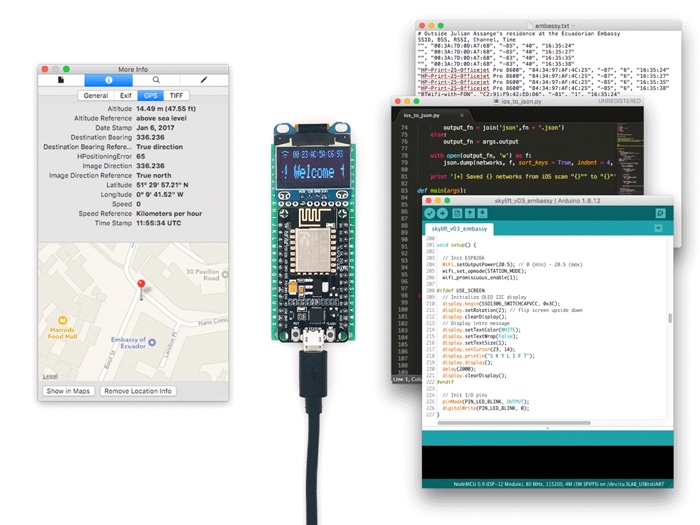
SkyLift V0.3 (current build) Photo ©Adam Harvey. Used in Adam Harvey and Anastasia Kubrak, Data Pools, 2018
The pools and mansions of Silicon Valley are financed by the mechanisms of economic surveillance and ownership of your personal data. Yet the geographic locations of these luxurious residences are often removed from open source databases. Data Pools uses SkyLift, an experimental wifi geolocation spoofing device that relocates your smartphone to these hidden locations of interest. The work explores the relationship between data collection, consent and the technologies behind wifi geolocation positioning.
With this project, Adam Harvey and Anastasia Kubrak allows you to cheat these technologies of control and pretend you’re having a drink by the private pools of big tech billionaires such as Jeff Bezos, Peter Thiel, Mark Zuckerberg or Larry Page.
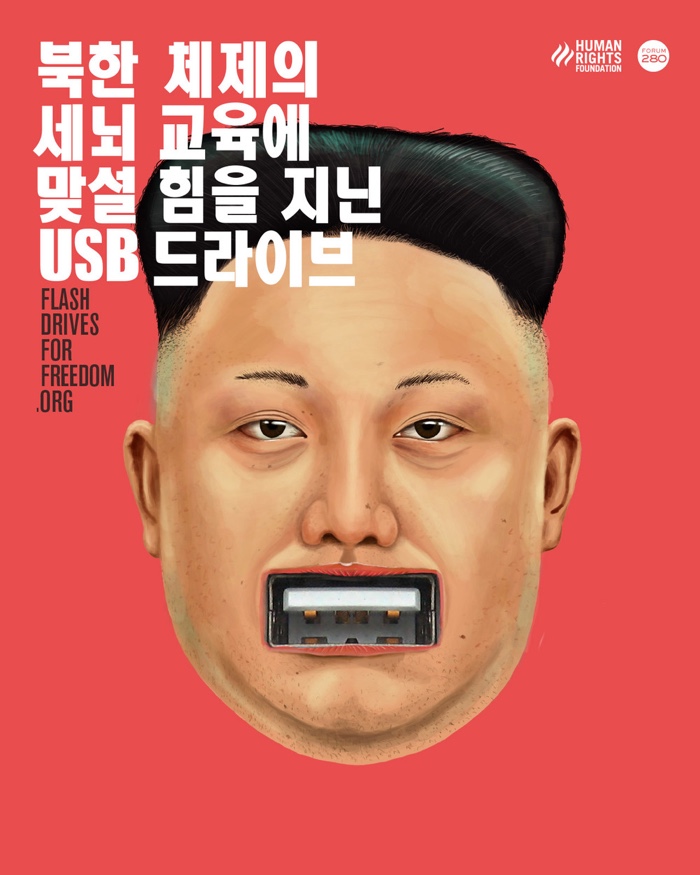
Human Rights Foundation, Flash Drives for Freedom, 2005
The Human Rights Foundation is using USB sticks to counter Kim Jong-un’s propaganda machine and influence people living in North Korea.
A few years ago, a group of defectors began smuggling USB drives with educative and informative contents from the outside world. The campaign invites people all over the world to support their “subversive” effort and donate their unused drives. The USBs will then be filled with e-books, films, an offline Korean Wikipedia and other content proven to inspire North Koreans to disbelieve Kim Jong-Un’s propaganda and take a stand. The drives are then smuggled into the country.
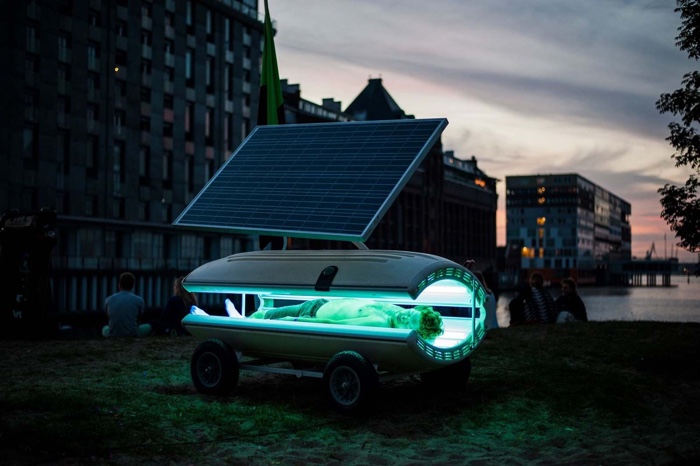
Meeus van Dis, Super Green (Solar powered tanning bed), 2016. Photo credits: Sabrina Gaudio
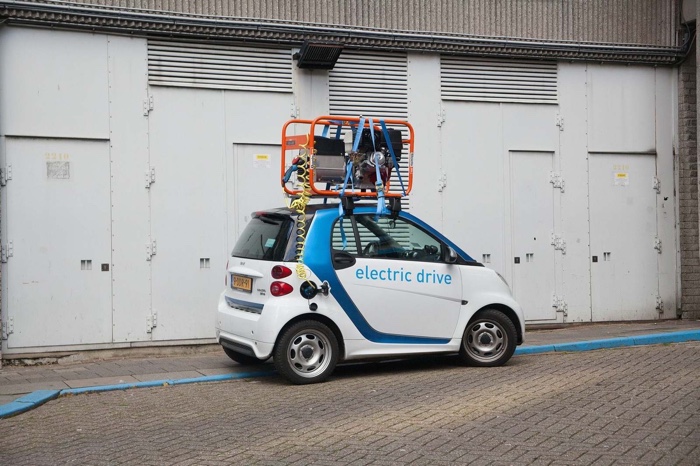
Meeus van Dis, Super Green (The diesel fuel powered electric car), 2016. Photo credits: Sabrina Gaudio
Steven de Peven, Meeus van Dis and Bart Eysink Smeets used absurdist humour to question the “technofix”, this tendency we have to look at technology and design as providers of the ultimate solution to climate change and other man-made problems.
Their Super Green series features the GreenBrown solarium powered by solar energy to give you an eco-tan, an electric car powered by a diesel generator and an electric fan that uses wind energy.
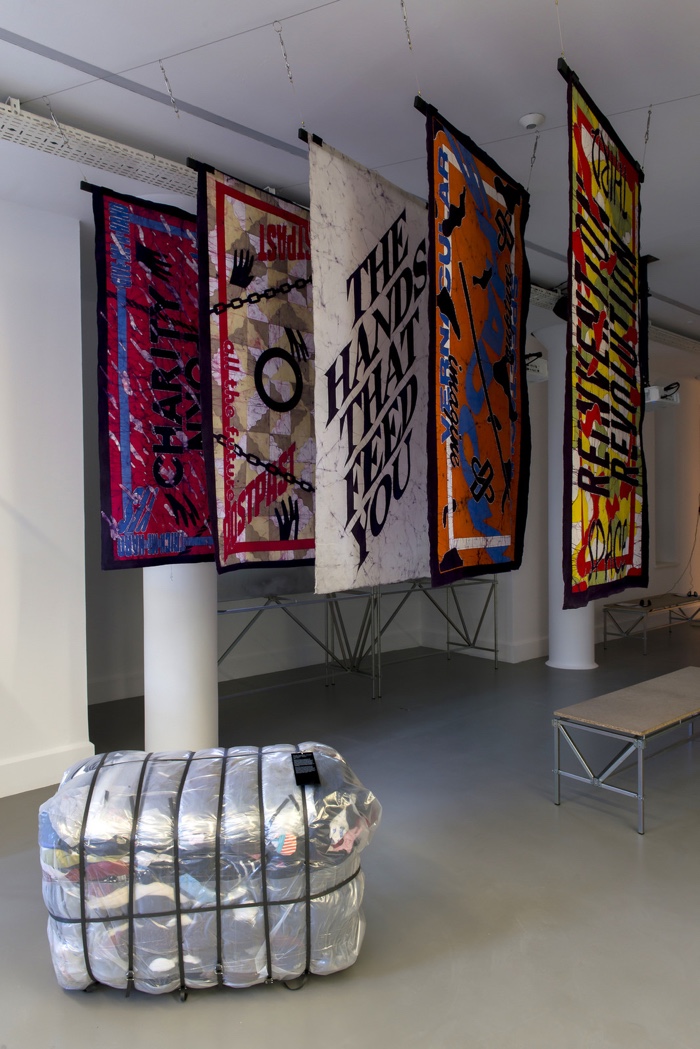
Joao Roxo, The Hand that Feeds you, 2017. Photo: Kayhan Kaygusuz
The Hands That Feed You: Global Dependency and Design for the Third Space maps the North-South divide and the dynamics of its inter-dependency systems, in particular its flows of waste and surplus. The work also exposes a “Third Space” made of self-reliance and resourcefulness and informal economies. An example of this inventiveness is the furniture that people in the South craft using the excess of unwanted clothing sent as ‘charity’ from the North. People stuff big bags with the clothes and use them as poufs for example.
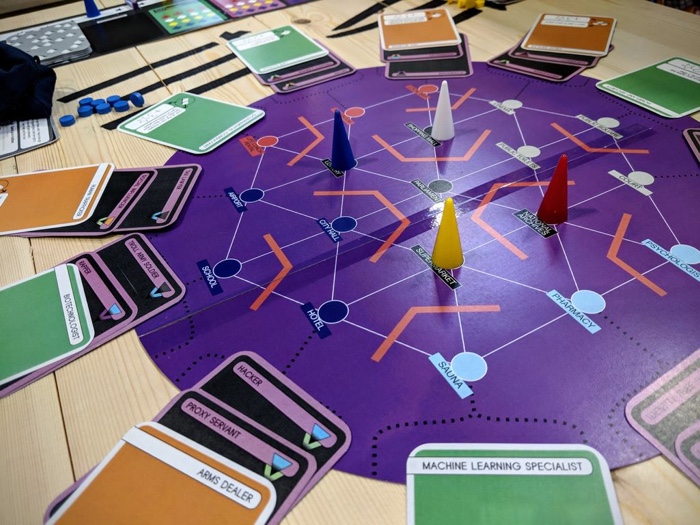
Janna Ullrich, Quantified (image)
’Quantified’ is a cooperative board game, set in a world in which everyone’s behavior is constantly surveilled and analyzed. A player’s behavior results in a social credit score leaving traces of data behind for governments and corporations to analyse and determining their position on the social ladder. Players start from different positions on the social ladder, as refugee, unemployed or employed, with unequal access to human rights. The goal of the game is to make all rights accessible to all players and to fight the implementation of totalitarian policies.
By gamifying the complex challenges of migration, participants experience how legal innocent activities can make them lose their rights and how they can collectively fight for laws that protect their rights.
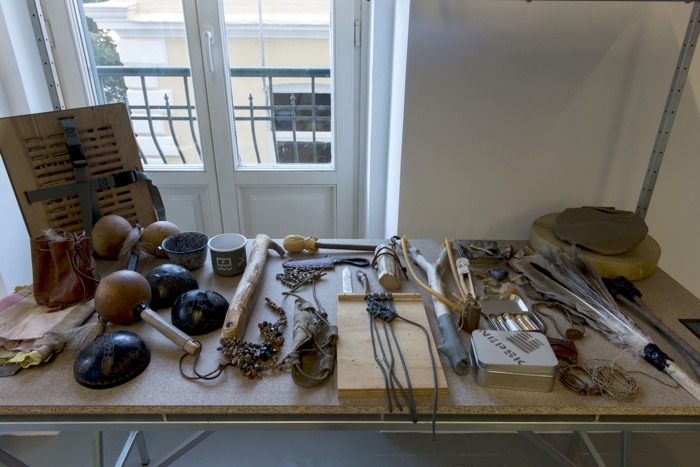
Tattfoo Studio, New Earth Personal Survival Kit, 2017. Photo: Kayhan Kaygusuz
Tattfoo Studio, New Earth Personal Survival Kit, 2017
New Earth Personal Survival Kit, aka NEPSK, is a series of small survival kits that form part of an educational program teaching an ethos of self-reliance and living closer to the Earth. Although the work intends to prepare us for any type of challenging situation we might encounter in the future, it features artifacts inspired by folk craft and everyday objects. The artist believes that equipping yourself for the future also involves a great deal of looking back at past practices and strategies.
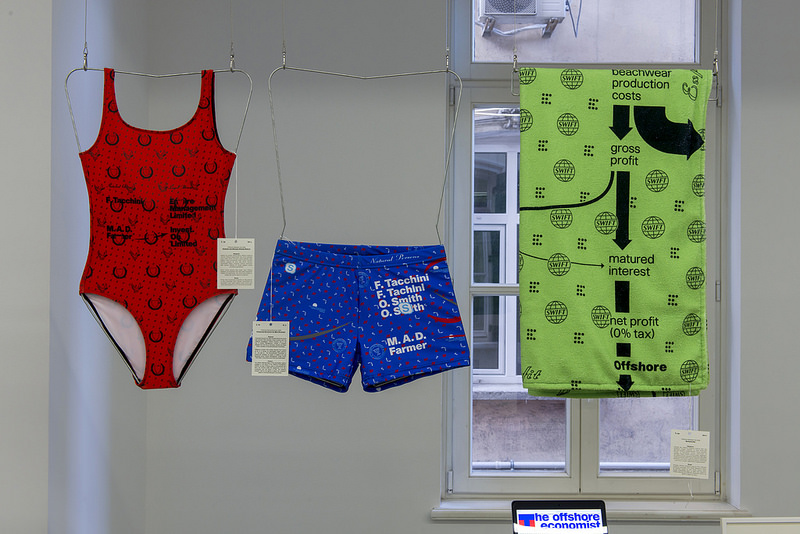
Demystification Committee, Offshore Spring/Summer 2018, exhibition view at the Istanbul Design Biennial. Photo: Kayhan Kaygusuz
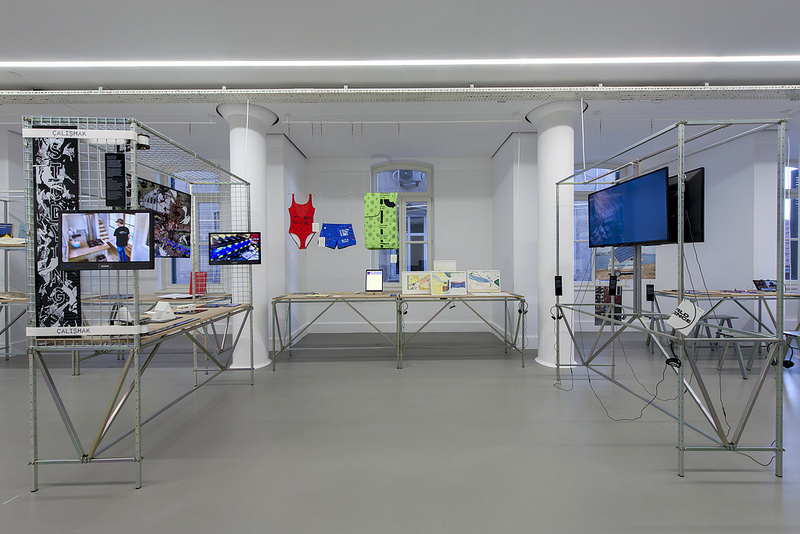
Demystification Committee, exhibition view at the Istanbul Design Biennial. Photo: Kayhan Kaygusuz
The Offshore Investigation Vehicle, by Demystification Committee, is an art and research project that takes the shape of an international corporate structure set up to model and explore offshore finance. Secretive movement of money is a crucial component of the offshore world. In order to benefit from this, the structure has launched a collection of beachwear: Offshore Spring/Summer 2018. In this leisure collection, the stakeholders and strategies of the dark infrastructure is portrayed as being just as unseen as brightly coloured, pop-fashion diagrams.
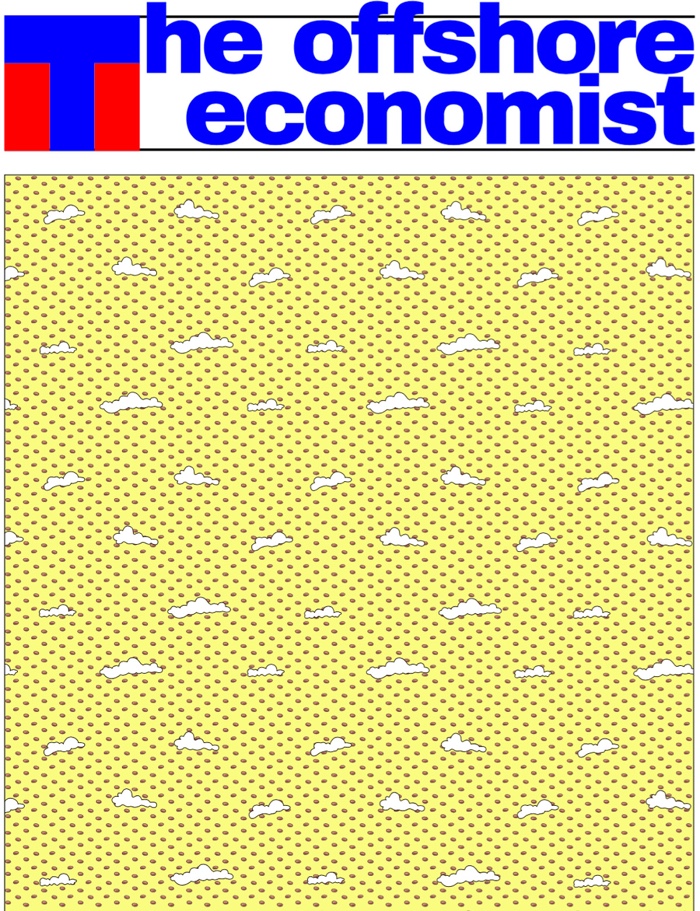
Demystification Committee, Offshore Economist, 2018
The Offshore Economist, a digital publication focusing on the cracks inherent to the offshoring practices of corporate finance.
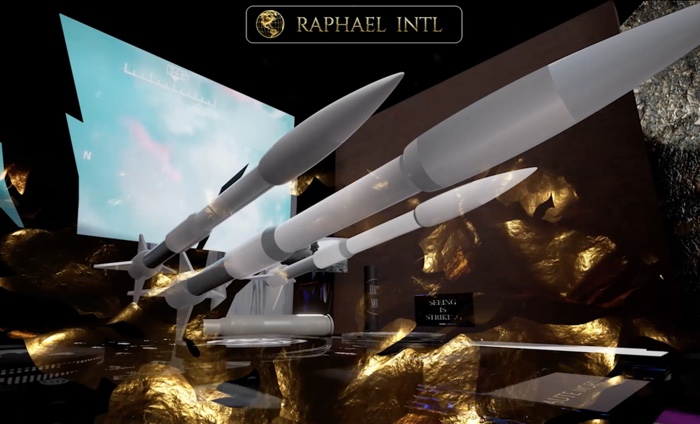
Mary Ponomareva, Luxury Survival Fair, 2017
Our anxieties and uncertainties about future disasters shouldn’t stifle the economy. In fact, ‘The end of the world’ is a business opportunity like any other, with high-end private security systems, state-of-the-art predator drones, luxurious survival condos and jewel-encrusted gas masks, etc.
By speculating on the objects and services that will make post-apocalyptic life more glamourous, Mary Ponomareva’s Luxury Survival Fair questions the role that aesthetics plays in the construction of ideology.
A School of School, the 4th Istanbul Design Biennial is curated by Jan Boelen and organised by the Istanbul Foundation for Culture and Arts (IKSV). The exhibitions remain open at various locations in Istanbul until 4 November 2018.
Also part of the biennial: Halletmek. The Turkish art of speeding up design processes and Genetically Modified Generation (Designer Babies).


